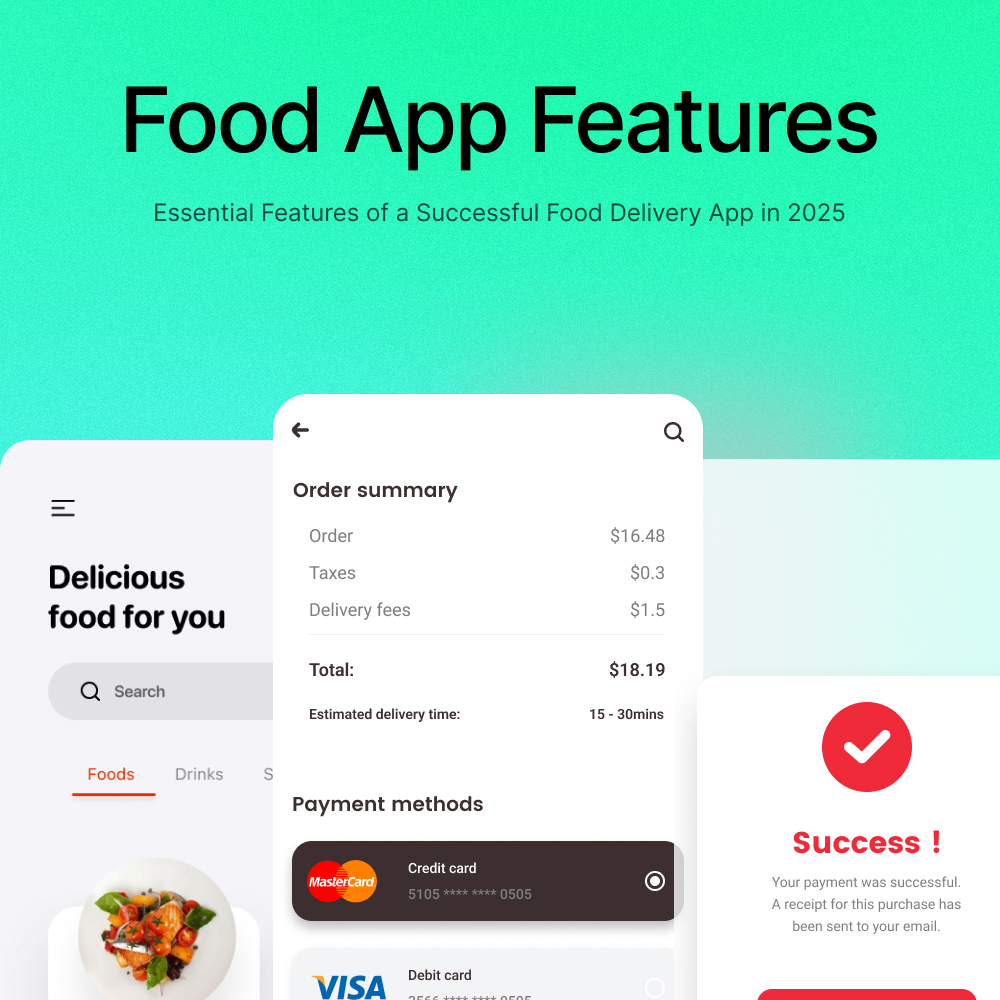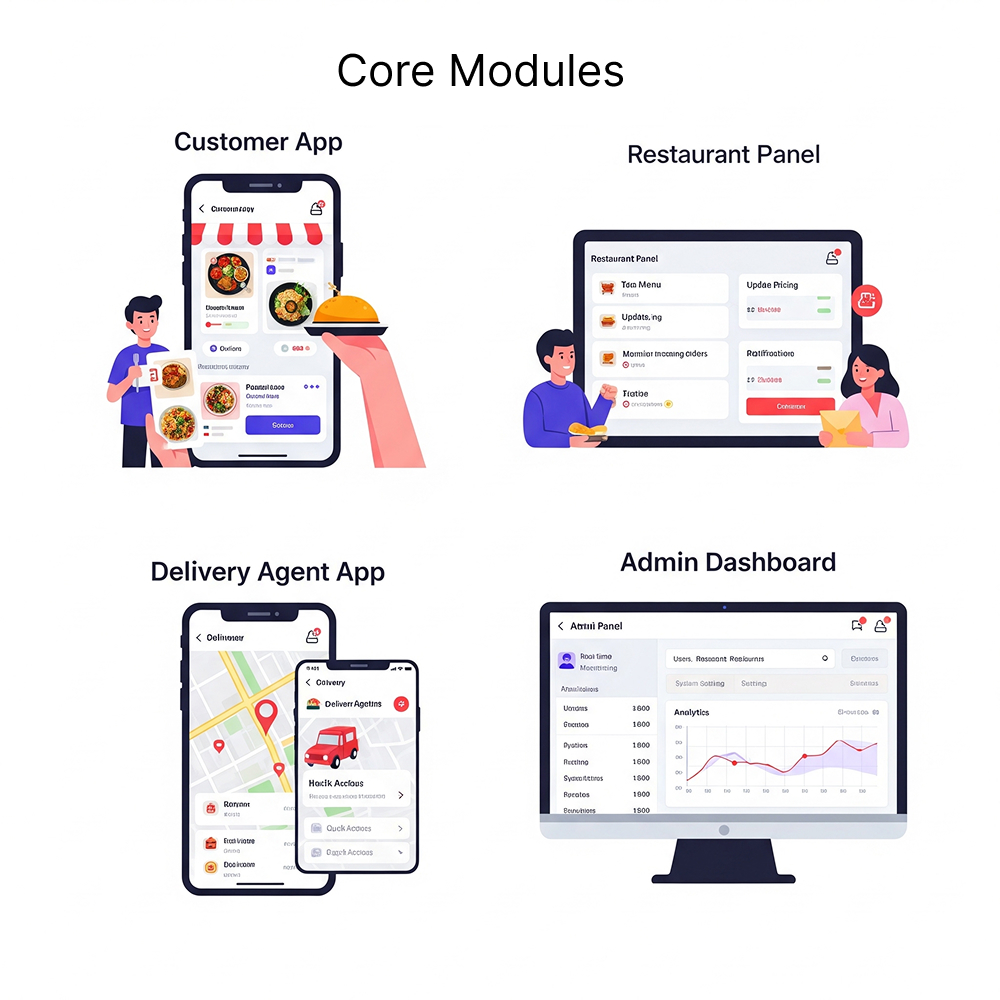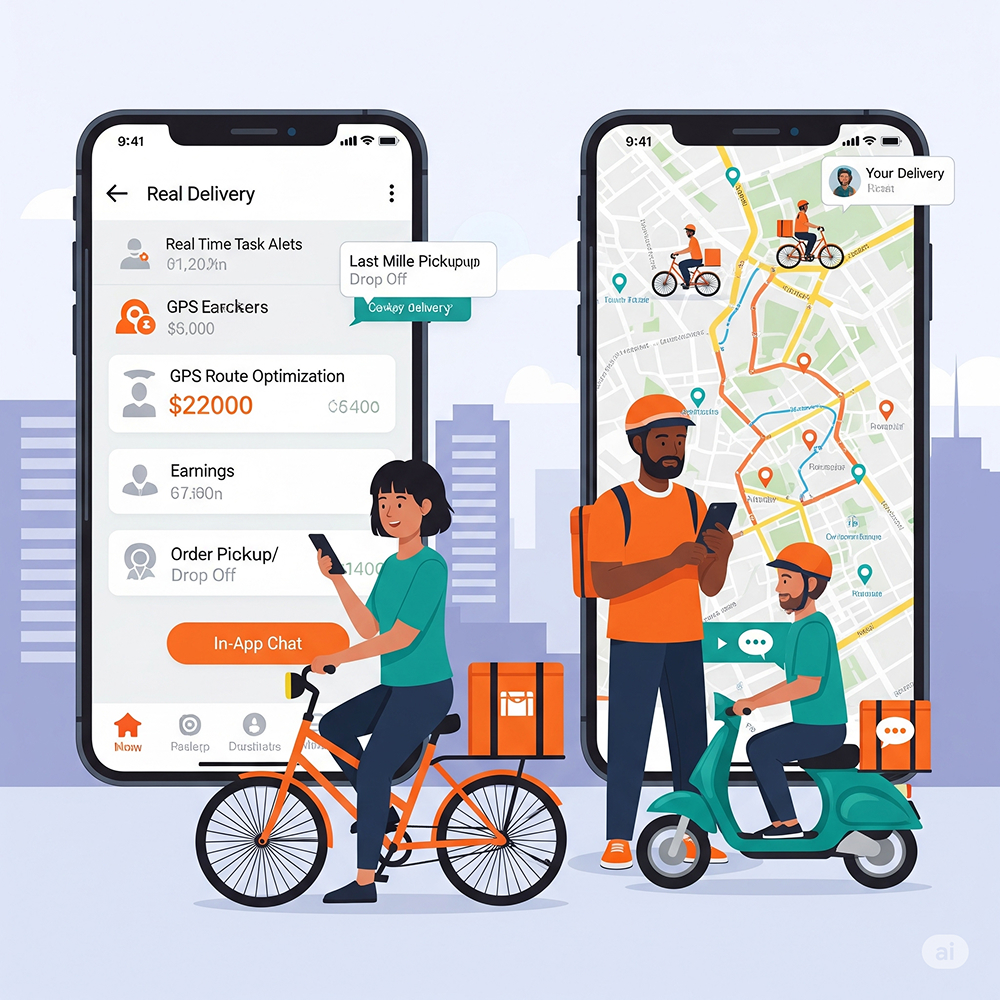Feature Framework for Building Successful Food Delivery Platforms in 2025

Introduction: Why 2025 Demands Smarter Food Delivery Apps
The food delivery industry continues to evolve rapidly, with new trends, technologies, and user expectations shaping how platforms perform. In 2025, customers want speed, convenience, personalization, and innovation—all packed into a sleek, user-friendly mobile experience. The Indian online food delivery market, valued at USD 48.07 Billion in 2024, is projected to reach USD 537.23 Billion by 2034, growing at a CAGR of 27.30% from 2025, with major drivers being increasing urbanization, smartphone penetration, rising disposable incomes, and the growth of dual-income households.
Whether you’re a restaurant owner, startup founder, or enterprise, investing in the right food delivery app development company can significantly improve your chances of long-term success. This blog outlines the essential features that any successful food delivery app must include in 2025.
Strategic Imperative: Why Smart Features Drive Growth
Every tap, scroll, and checkout on a food delivery app matters. Features are the backbone of user experience—and they directly impact your brand loyalty, order frequency, and app ratings. The focus is shifting from aggressive scale to long-term viability, efficiency, and hyper-personalization.
Businesses that opt for on-demand food delivery app development are looking for agility, scalability, and competitive edge. With the right partner offering custom food delivery software solutions, your app can go beyond food delivery—it becomes a growth engine. This is key for app development for food business growth.
Core Operational Modules of a Food Delivery Platform

To understand the features in detail, it’s important to know the main functional modules of a comprehensive food delivery app development project:
- Customer App:For Browse, ordering, tracking.
- Restaurant Panel: For managing menus, orders, and analytics.
- Delivery Agent App: For real-time delivery tracking and task management.
- Admin Dashboard:For system-wide control and insights.
A reliable food delivery app development company will ensure that all these modules work seamlessly together, providing robust food delivery application development.
Engagement, Retention, and Satisfaction: The Pillars of Success
When considering food delivery app development services, these customer-centric features are non-negotiable:
- Easy Onboarding (Social Login & OTP): Reduce friction by allowing users to register via phone numbers, Google, Facebook, or Apple ID.
- Smart Search & Filters: Users should be able to filter by cuisine, dietary preference, price, delivery time, and ratings. Neural search, allowing conversational, open-ended queries, is also emerging.
- Live Order Tracking with GPS: Real-time updates keep users informed and reduce anxiety about their orders. Predictive ETAs are crucial.
- Multiple Payment Options: UPI, wallets, credit/debit cards, net banking, and COD—all should be available and secure. Over 91.7% of all transactions in India are conducted through digital methods like UPI and wallets.
- Offers, Coupons & Loyalty Points:Promotions encourage repeat orders and build customer loyalty. AI can personalize loyalty rewards and recommend challenges.
- In-App Chat & Customer Support:Offer quick resolution to queries through live chat or AI-powered chatbots for common queries.
- AI-Powered Food Recommendations: Suggest dishes based on previous orders, location, and time of day—an essential feature in 2025. This leverages machine learning to analyze Browse patterns and past orders for hyper-personalization.
These are key elements offered by leading food delivery app development services that focus on enhancing user satisfaction and retention.
Empowering Restaurants: Features for Control and Growth

With custom food delivery software solutions, restaurants gain full control. Here are the vital features:
- Menu & Price Management: Easy-to-use dashboard to add, edit, or remove menu items and offers. Dynamic pricing based on demand, supply, weather, and competitor pricing is a growing trend.
- Order Notifications & Status Updates: Real-time updates on new, preparing, or cancelled orders.
- Earnings Reports & Analytics: Track sales, customer behavior, peak order times, and feedback.
- Inventory & Availability Settings: Temporarily disable unavailable items or update stock in real-time. AI-enabled inventory management can prevent wastage and ensure stock availability.
- Promo Management: Run targeted discounts for holidays, weekends, or specific locations.
With custom food delivery software solutions, restaurants can fully control their operations and customer engagement in one place. Cloud kitchens are increasingly leveraging data analytics to optimize menu offerings and predict customer demand. This streamlines operations for any food delivery app development company.
Deliver Smarter: Key Features for Your Fleet

Professional food delivery app development companies prioritize seamless logistics. Here’s what delivery agent apps need:
- Task Notifications & Alerts: Agents receive instant pings for new deliveries with complete order details.
- Route Optimization with Maps: Use Google Maps or Mapbox APIs for quickest delivery routes. AI-driven algorithms analyze real-time traffic and weather to optimize routes and even reroute drivers dynamically.
- Order Pickup & Drop-Off Confirmation: Real-time status updates ensure transparency for restaurants and customers.
- Earnings Tracker: Daily, weekly, and monthly payment summaries for agents.
- In-App Chat with Customer or Support: Allows better coordination during deliveries.
Professional food delivery app development companies focus on seamless delivery logistics to improve delivery times and satisfaction, aiming for a 40-45% reduction in delivery latency by 2030 through AI-driven traffic algorithms and predictive inventory. This is critical for on-demand food delivery app development.
Admin Panel Features for Total System Management
A strong backend foundation is what defines high-quality food delivery application development.
- User Management: Add, remove, or monitor users—restaurants, customers, and drivers.
- Commission & Payment Control: Set restaurant commissions, manage payouts, and track revenues.
- Order Monitoring Dashboard: View real-time order status across the system.
- Content Management (CMS): Manage banners, offers, FAQs, and static content within the app.
- Data Insights & Reports: Visual dashboards showing performance metrics, peak hours, top customers, and more. AI and machine learning are increasingly used for backend optimization, including demand forecasting and resource allocation.
Strategic Differentiation: Next-Generation App Capabilities for 2025
To stay competitive in 2025, your food delivery app development must include:
- Voice Search & Voice Ordering: Allowing users to place orders hands-free, integrated with virtual assistants like Alexa, Google Assistant, and Siri.
- Dark Mode for Accessibility.
- Scheduled Deliveries & Subscriptions: Offering recurring deliveries for convenience. Integration with Smartwatches.
- Multi-language & Multi-currency Support.
- Augmented Reality (AR) and Virtual Menus: Allowing users to visualize dishes in 3D or explore restaurant environments virtually.
- Gamification: Incorporating game-like elements, reward points, and leaderboards to increase user engagement.
- IoT Integration: For optimizing food quality and streamlining logistics.
- Drone and Robot Deliveries: While still in experimental phases for widespread use, these are significant future trends for ultra-fast and contactless delivery.
These features are crucial in on-demand food delivery app development and are expected by modern users.
Data Protection, Privacy & Compliance in Food Delivery Apps
Security is non-negotiable in any digital product. Key compliance features a food delivery app development company must prioritize include:
- End-to-End Data Encryption.
- Secure Payment Gateway Integration.
- GDPR & Data Privacy Compliance: Ensuring user data protection is paramount
- Two-Factor Authentication (2FA).
- AI for Fraud Detection: Analyzing transaction data in real-time to flag suspicious activities.
Choosing an experienced food delivery application development partner ensures all these are baked into your app from day one.
How the Right Features Drive Business Growth
From real-time tracking to AI-driven personalization, every feature plays a role in app development for food business growth. The right features reduce churn, increase order volume, and help you scale across cities or even countries. The Indian food delivery market is seeing expansion into Tier II and Tier III cities, which now account for over 48% of all food delivery orders by volume.
Partnering with a reliable food delivery app development company means getting a custom, scalable, and future-ready solution—built just for your business.
Conclusion: Build Smart, Deliver Fast
Building a food delivery app in 2025 isn’t just about replicating Swiggy or UberEats. It’s about creating a solution that’s agile, customer-focused, and scalable. The future will belong to those who adapt fast, invest in digital, prioritize data, and lead with purpose, especially given the rising customer expectations and shrinking delivery windows in India.
Whether you need custom food delivery software solutions, on-demand food delivery app development, or full-cycle food delivery app development services, choosing a trusted tech partner is critical for successful food delivery app development.
